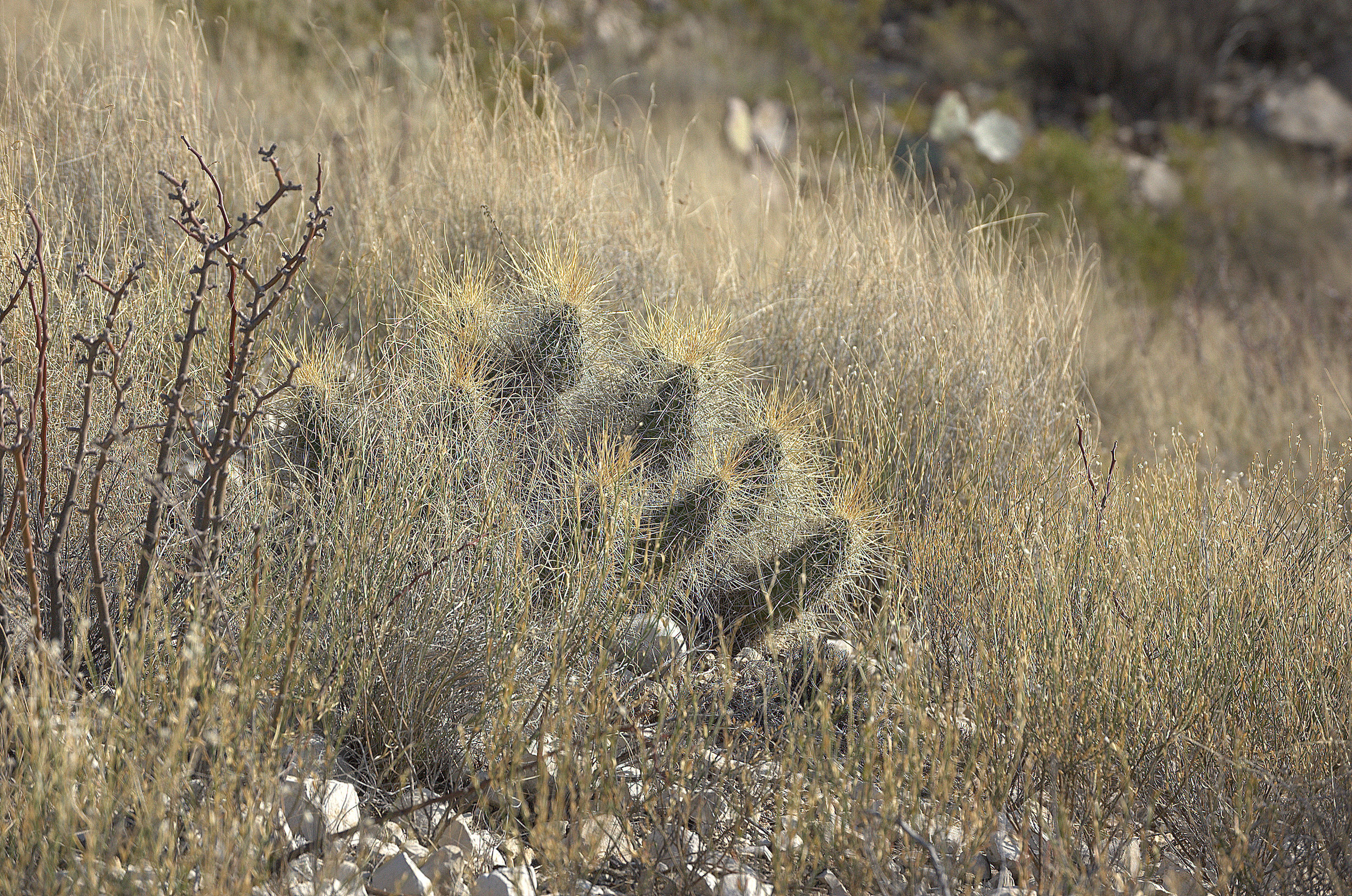Mesa de Anguila
Mesa de Anguila is a large topographical feature in the far western portions of Big Bend National Park, cut to the south by the Rio Grande. This uplift is one of the least visited areas of the park, and trails here are rough and precarious. The original goal was to hike cross country along an old pack trail to visit a small canyon along the river. It is February and Hunnemannia fumariifolia is blooming at this time. This small canyon is the only known location in Texas, and the US, for this species to occur.
Footbills of Mesa de Anguila
This is the view across the Lajitas golf course to the foothills of the Mesa de Anguila. This is our pathway to the canyon on the other side where the Rio Grande cuts through.
Mammillaria pottsii, Rat-tail Nipple Cactus
We quickly encountered all sorts of cacti and herbaceous species on these mostly barren hills. This Mammillaria species has found an opportunistic crack in the rocks.
Mammillaria pottsii, Rat-tail Nipple Cactus
Mammillaria pottsii, Rat-tail Nipple Cactus
Mammillaria pottsii, Rat-tail Nipple Cactus
Echinocereus viridiflorus var. russanthus, Brownspine Hedgehog Cactus
Echinocereus viridiflorus var. russanthus, Brownspine Hedgehog Cactus
Hechtia texensis, Texas False Agave
Hechtia is one of my favorite plants occurring in the park, and it was prevalent here. Above you see the spent bloom stalks that have given way to a heavy seed set.
Hechtia texensis, Texas False Agave
Hechtia texensis, Texas False Agave
Unidentified Mammillaria
I have yet to identify this Mammillaria species.
As we crested the pass, you can see the valley leading down into the canyon in the distance. Around the bend to the right is the Rio Grande, out of view.
This area is very lightly traveled by visitors and there were scattered relics of earlier explorers in the region.
Fossils such as this serve as a reminder of the aquatic history of Big Bend National Park, something that is easily forgotten in this hard desert.
Echinocereus dasyacanthus, Texas Rainbow Cactus
This is a particularly white-spined variety of Texas Rainbow Cactus.
Selaginella pilifera, Resurrection Plant
Resurrection plant is one of the more fascinating plants of the desert. Growing in areas that go without rainfall for months at a time, this plant conserves energy by going dormant and looking almost dead. At the first taste of rain, they will regain their green color and revive in a matter of minutes. Below, you can see them scattered across the ground, nearly blending completely with the rocks.
Selaginella pilifera, Resurrection Plant
Ferocactus hamatacanthus, Giant Fishhook Cactus
Cacti will grow in nearly any crevice.
Echinocereus stramineus, Strawberry Hedgehog Cactus
Cacti spines blend nearly flawlessly with dried grasses.
Opuntia spinosibacca, Spinyfruit Prickly Pear
Becoming uneasy about the terrain, lack of formal trail, and running out of daylight, we decided to abandon the Hunnemannia mission and hiked back out of the valley. The wind was incredibly strong along the northern exposures of this mesa, blowing upwards of 50 miles per hour consistently. Needless to say, we were battered and beaten, but not discouraged. This canyon is still on my list and I will make another attempt soon.
Mexico






















